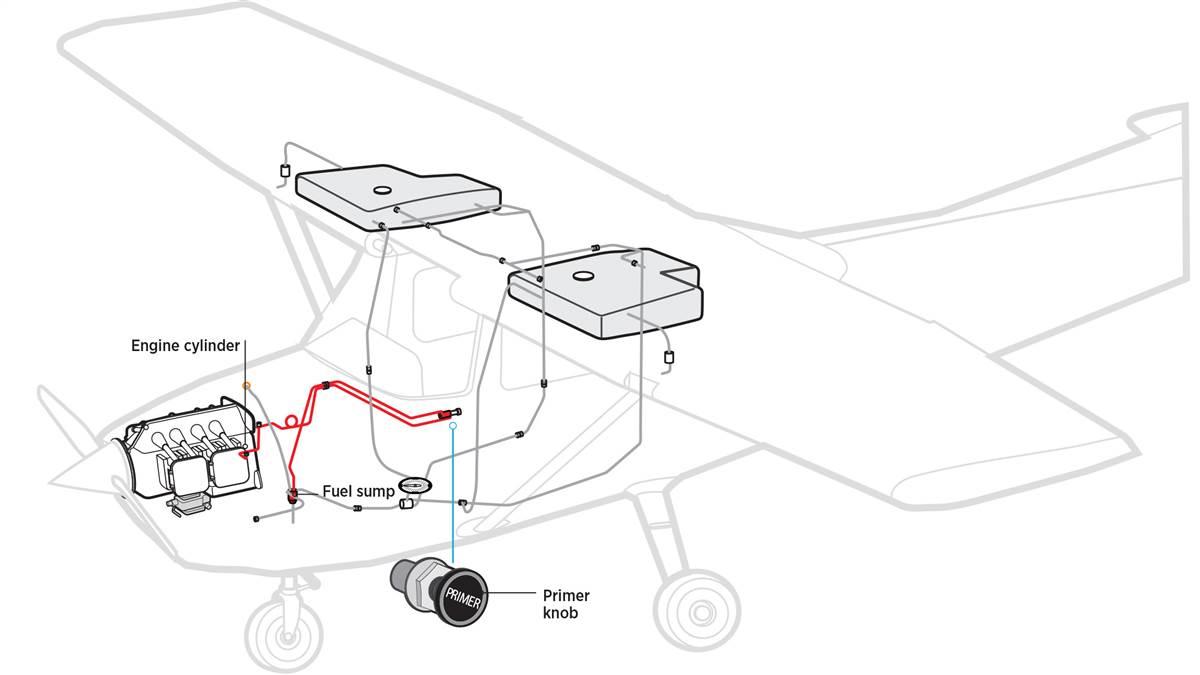
When cold, a carbureted aircraft engine may not generate sufficient heat to vaporize the fuel in its cylinders, resulting in an engine that won’t start. A manual fuel primer injects vaporized fuel directly into one or more of the engine’s cylinders or the induction manifold to aid in starting. Fuel-injected engines do not require a primer.
The primer knob is typically located on the instrument panel and is locked in the closed position. To unlock the primer, twist while gently pulling back on the primer knob until it unlocks. Slowly pull the primer knob all the way out, and allow the primer to fill with fuel drawn from the fuel sump. Slowly push the primer knob all the way in to force fuel through small fuel lines and special nozzles that create a fine mist as it is injected directly into the engine cylinders or induction manifold. When completed, lock the primer by pushing it fully in and rotating the knob a quarter turn. Confirm the primer is locked by pulling on it to make sure it does not move. A primer accidentally left open will cause the engine to run rough after starting.
Check your aircraft’s pilot’s operating handbook (POH) for proper cold and hot starting procedures, but two “pumps” of the primer are typically used to prime the engine before the first start of the day. Some POHs recommend against priming an already warm engine.



